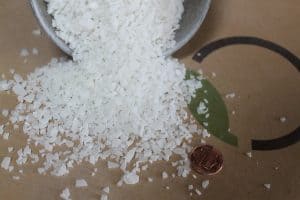How to Beat Afternoon Fatigue Naturally
Afternoon tiredness is something most of us know too well. It hits at the same time most days: you’ve got work left to do, but your brain feels heavier, your eyes are slower, and the to-do list doesn’t move.
This what we’ve got covered in our blogs:
- Fix what’s on your plate at lunch
- Drink Water before more caffeine
- Get up and move
- Look at evenings and afternoon
- Top with basic nutritions and organic products
- Listen to when your body asks for more
Before you reach for another coffee, there are a few simple things you can try that don’t involve energy drinks or pushing yourself harder.
1. Fix what’s on your plate at lunch

A lot of that afternoon crash comes from what we eat a couple of hours before.
If lunch is mainly white bread, pasta, pastries or something very sugary, your energy will shoot up and then drop. That’s when the slump kicks in.
A better pattern is:
-
some protein – eggs, chicken, beans, lentils, tofu,
-
slow carbs – brown rice, quinoa, wholemeal bread, sweet potato,
-
a bit of healthy fat – olive oil, nuts, seeds, avocado.
You don’t have to eat “perfectly”, but if you look at your plate and it’s mostly beige and refined, it’s worth adjusting. Little changes here make a bigger difference than most people expect.
You could also add a scoop of something like a Cutetonic protein or greens powder into a smoothie at lunchtime if you struggle to get enough variety in.
2. Drink water before more caffeine

It’s very easy to confuse tiredness with being slightly dehydrated.
Instead of going straight for another coffee at 3pm, try:
-
a big glass of water first,
-
or water mixed with a small amount of Cutetonic Vitamin C Powder to boost your immune system and energy.
Give it 15–20 minutes. Quite often you’ll feel a bit clearer just from that. You can still have the coffee afterwards if you really need it, but at least you’ve covered the basics.
3. Get up and move, even briefly

When you sit in the same position for hours, your body and brain both slow down. You don’t need a full workout to change that.
A few ideas:
-
walk to make a drink and take the long way around,
-
do some shoulder rolls and gentle stretches at your desk,
-
stand up for a phone call instead of staying in the chair.
Five minutes of movement can be enough to wake your body up again. It sounds too simple, but it works better than another biscuit most of the time.
4. Look at your evening, not just your afternoon

If you’re tired every afternoon, there’s usually a sleep story behind it.
You don’t have to overhaul your whole life, but you can:
-
aim for roughly the same bedtime most nights,
-
ease off heavy late-night screen time,
-
build a small routine that tells your body it’s time to wind down.
Some people like using Cutetonic Magnesium Flakes in a warm bath in the evening. A bath on its own can be calming; magnesium is there to support relaxation as part of that routine. If your nights feel calmer and your sleep improves, your afternoons usually follow.
5. Top up the basics organic products

If you’re always on the go, it’s easy to miss out on the simple things: enough veg, enough fibre, enough colour on the plate. Over time, that can show up as feeling flat.
You can:
-
add an extra handful of veg to one meal a day,
-
swap one snack for fruit, nuts or yoghurt,
-
or blend a scoop of Cutetonic Superfoods into water or a smoothie when you’re short on time.
It’s not about perfection. It’s about nudging your body in the right direction so it has what it needs to keep you going.
6. Listen when your body is asking for a pause
Afternoon fatigue isn’t always something to “beat”. Sometimes it’s your body telling you you’ve been running too fast for too long.
If it’s happening every single day, ask:
-
am I sleeping enough?
-
am I taking any proper breaks?
-
am I living on caffeine and sugar to get through?
Start with food, water, movement and sleep. If you sort those foundations, you might find your afternoons feel very different without anything extreme or complicated.







